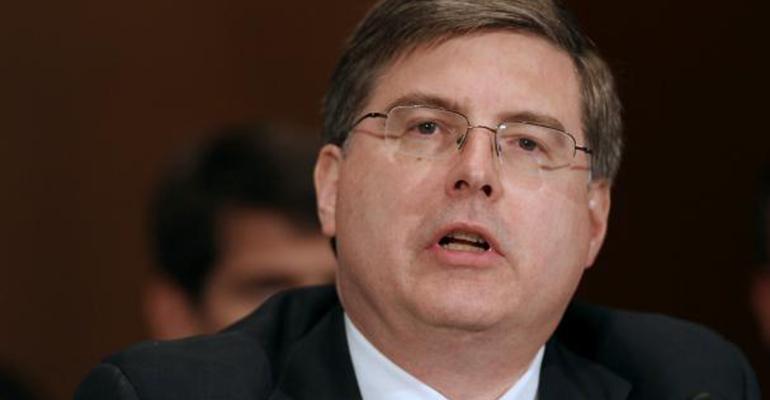The Financial Industry Regulatory Authority (FINRA) has made high-risk brokers a top priority, announcing new proposals that would strengthen controls and require broker/dealers to heighten supervision of potential bad apples. FINRA’s BrokerCheck system allows the public to view an individual broker’s regulatory history. But what about firms that employ a significant number of brokers with bad histories?
The self-regulatory organization has recently changed its policy to allow the public to access bulk data on firms, said FINRA President and CEO Robert Cook, who testified before the U.S. House of Representatives Subcommittee on Capital Markets, Securities and Investment about FINRA’s operations and regulatory programs Thursday.
“Over time, collectively we’re realizing there’s potential opportunity in having them be able to see patterns in their firm,” Cook said. “We’re also looking at whether there are packages of data that we could make available to researchers and others to help facilitate.”
During the hearing, Rep. Stephen Lynch (D-Mass.) expressed concern over the issue.
“If I wanted to avoid a firm that was toxic and had a large number of brokers who were violating your rules, I wouldn’t be able to do that,” Lynch said. “You don’t give me the information to do that right now in the current form. I would ask you to provide that greater protection to investors and parties that want to hold some of the bad actors accountable."
In 2014, FINRA created an algorithm that did an analysis of all 650,000 registered reps in the industry to create a risk ranking. The algorithm is now in its fourth iteration, FINRA says. They’ve also created a dedicated examination and monitoring team specifically focused on these high-risk brokers. If appropriate, they’ll do an expedited review and, if appropriate, an expedited disciplinary action.
In June, Executive Vice President of Regulatory Operations Susan Axelrod said FINRA will not share its rankings with firms; their decision to bring on a certain rep is a business decision. And people are entitled to fairness and due process.
“If we’re just sharing our regulatory intelligence with firms, or putting it on our website, they may at the present time not be violating rules in any capacity,” she said at the time.
Cook did not expound on the new policy and whether it would include the regulator’s rankings of high-risk brokers.
“This heightened scrutiny has had an impact. Of the firms assessed as highest risk in the last five years, more than 40 percent are no longer in the business, in many cases because of regulatory action,” Cook said in his written testimony to the committee. “In other cases, close scrutiny by our examination team has caused firms to take steps to address our concerns, such as by making changes or improvements in personnel, operations and the quality of their supervisory controls.”
Cook also cautioned against relying too much on FINRA’s assessment, pointing out the limitations of identifying high-risk firms and brokers.
“FINRA does not possess a crystal ball—our assessment of brokers for oversight purposes does not always identify brokers who will cause problems in the future,” he said in his prepared remarks. “In addition, the risk profile of firms and brokers will change over time. We must continually seek to update our assessments and improve our approach based on practical experience, additional information and new analytical techniques.”





